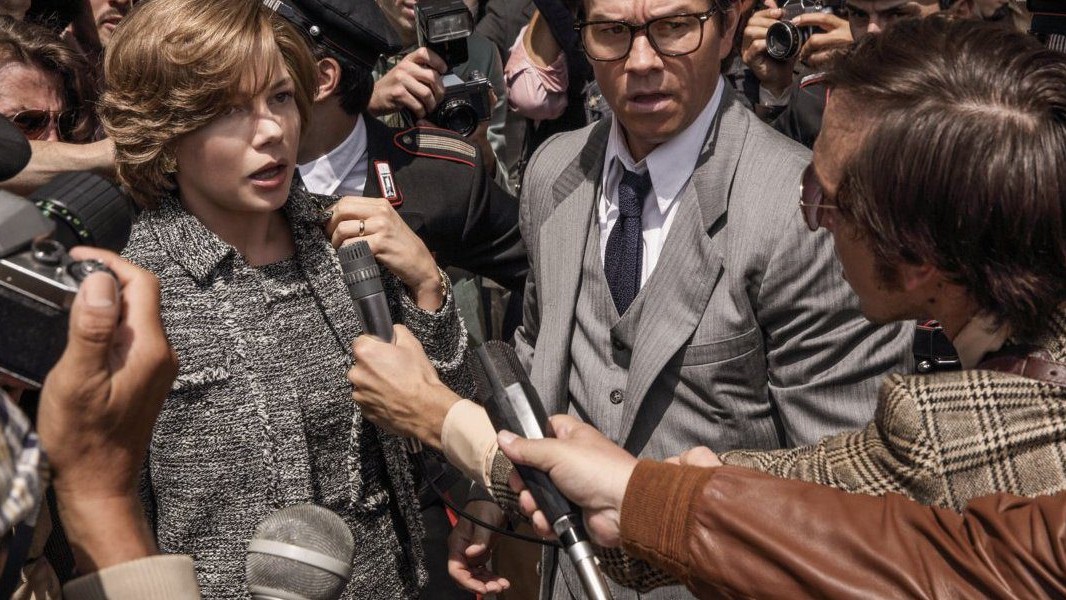It’s not likely that you’ve heard of All the Money in the World, the true-life story of the kidnapping of a Getty heir, without also hearing of the off-screen drama that has accompanied the film.
Sexual misconduct allegations against the film’s main star – Kevin Spacey – sent the movie into crisis mode only weeks before the film was scheduled to open.
In an unprecedented move, director Ridley Scott decided to cut Spacey out of the movie altogether – a head-spinning decision since the actor had not only completed all of his scenes but because Scott announced that the film would also still meet its scheduled release date in the coming weeks. This feat would be accomplished by re-shooting the movie with Oscar-winning actor Christopher Plummer in Spacey’s vacated role. This race-against-the-clock, behind-the-scenes story no doubt has as much suspense as the material on which it’s based.
The inevitable question that the movie won’t ever be able to escape from is, how does the film, also starring Michelle Williams and Mark Wahlberg, hold together? With a screenplay by David Scarpa, based on a novel by John Pearson, All the Money in the World holds together surprisingly well. This big studio movie is certainly ambitious in scope, as Scott takes the film across continents with action, period piece designs, and a smart screenplay that provokes the audience to think. All the Money in the World tells the true story of kidnapped sixteen-year-old Getty heir J. Paul Getty III (Charlie Plummer) and the ransom race led by his mother, Gail Harris (Williams) and family advisor Fletcher Chase (Wahlberg) against the foreign kidnappers as well as her miserly father-in-law, J. Paul Getty (Christopher Plummer, no relation to Charlie).
Ironically, the shared symbolism is that the story of the former star of ‘All the Money in the World,’ like Getty himself, reflects powerful men being brought to their knees.
The drama, of course, comes in J.Paul Getty’s decision not to pay Paul’s $17 million ransom. For a man who at one time was considered to be “the most wealthy man in the world,” paying the ransom for the safe return of his grandson would seem to be the obvious decision. It’s a psychological study that Scott is interested in exploring here, showing Getty as a man who didn’t get to be where he was by conceding or being bested in any way, whether in business or in a hostage negotiation with his family. As Getty, Plummer brings light-hearted, unaffected poise and power to his character. Simultaneously confounded and enraged is Gail, who can’t understand why this man won’t pay for her son’s safety. Williams’ resilience and focus keep the film moving forward.
For a hostage movie, All the Money in the World isn’t as much white-knuckle tension as it is more a broad character and period piece. There are certainly a number of moments that will make impressions on viewers, and the final sequence of the film in which Getty arises out of bed to take a precious painting off a wall is one of the best sequences in cinema I’ve seen all year. It reminds us that Scott is a master of his craft, and at eighty-years-old, is one of the few filmmakers who not only commands a production as big as this but can handle any obstacles that would end the career of other filmmakers. Ironically, the shared symbolism is that the story of the former star of All the Money in the World, like Getty himself, reflects powerful men being brought to their knees.
132 min. ‘All the Money in the World’ is rated R for language, some violence, disturbing images and brief drug content.
Ryan Rojas
Ryan is the editorial manager of Cinemacy, which he co-runs with his older sister, Morgan. Ryan is a member of the Hollywood Critics Association. Ryan's favorite films include 2001: A Space Odyssey, The Social Network, and The Master.


